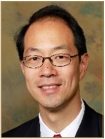How Should We Consider New Theories of Chiari Malformation Pathogenesis?
Article information

Drs. Goel [1] and Behari et al. [2] debate the diagnosis and treatment of Chiari 1 malformation, and both doctors present strong arguments. Dr. Goel discusses the pathogenesis of Chiari as variant of C1–2 instability, and fusion of the C1–2 joint results in resolution of symptoms. He presents illustrative examples of cases in whom C1–2 fusion results in dramatic radiographic improvement. Although Chiari has been generally described as a congenital anomaly, Dr. Goel makes a point that not all Chiari symptoms or syrinxes resolve after Chiari decompression. Thus, even by enlarging the space for the cerebellar tonsils and the cerebrospinal fluid flow, there nonetheless can be radiographic persistence of syrinx and incomplete resolution of symptoms. Thus, Dr. Goel’s point that there is some other mechanism (C1–2 instability as he reports) that is also at play.
Dr. Behari retorts that the data for Chiari decompression is fundamentally sound, and good outcomes are generally see with standard decompressions. He asserts that the majority of patients who undergo Chiari decompression have improvement and that Chiari decompression is tried and true treatment option with well-proven track record. Moreover, he states that the morbidity of C1–2 fusion or even occipital-cervical fusion can be quite morbid to the patient, committing patients to a lifetime or restricted range of motion and potentially further revision surgery. Dr. Behari also points out that current practices throughout the world for Chiari malformations are decompressions with or without duraplasty.
Both authors have valid points, and I suspect the answer lies somewhere in between. Dr. Goel does have a point that there may be some other mechanism by which Chiari malformation and syringomyelia are linked together. The resolution of symptoms in some patients but not in all patients with Chiari decompression points to the fact that there is some component of the pathogenesis of Chiari that we still do not understand. There may be another mechanism going on. However, the treatment of Chiari with C1–2 fusion surgery carries significant morbidity compared to a simple decompression. Permanent loss of range of motion, pseudoarthrosis, and adjacent segment degeneration are all issues that must be borne by a patient undergoing spinal fusion whereas such sequelae are not seen Chiari decompression patients. However, the fact that only 70% of patients improve with decompression alone means that there is some other mechanism in these 30% of patients that we don’t understand. Moreover, patients can have recurrence of symptoms after Chiari decompression, giving evidence to the fact that just decompression alone does not resolve all symptoms. However, C1–2 fusion is probably an extreme treatment for this pathology, even if it ultimately proves to be efficacious.
When considering new, revolutionary ideas, the establishment usually balks at first. When Stanley Prusiner, the 1997 Nobel Laureate, suggested that proteins could transmit disease, he was met with heavy criticism:
In the 1980s Prusiner championed the protein-only hypothesis in the face of hostile criticism, at a time when many scientists were convinced that all life-forms needed nucleic acid to replicate. Those close to the debate at the time say that the severity of the criticism directed at Prusiner was extraordinary… [3]
Although Dr. Geol’s theory currently remains just a theory, if he is ultimately shown to be correct, it could revolutionize the way that we think about Chiari malformation.
I would imagine that for now, current practices of decompression with or without duraplasty should remain the treatment of choice. However, further research into the pathogenesis by which Chiari malformations and syrinxes form may yield more definitive answers about mechanisms which are currently not fully understood.
